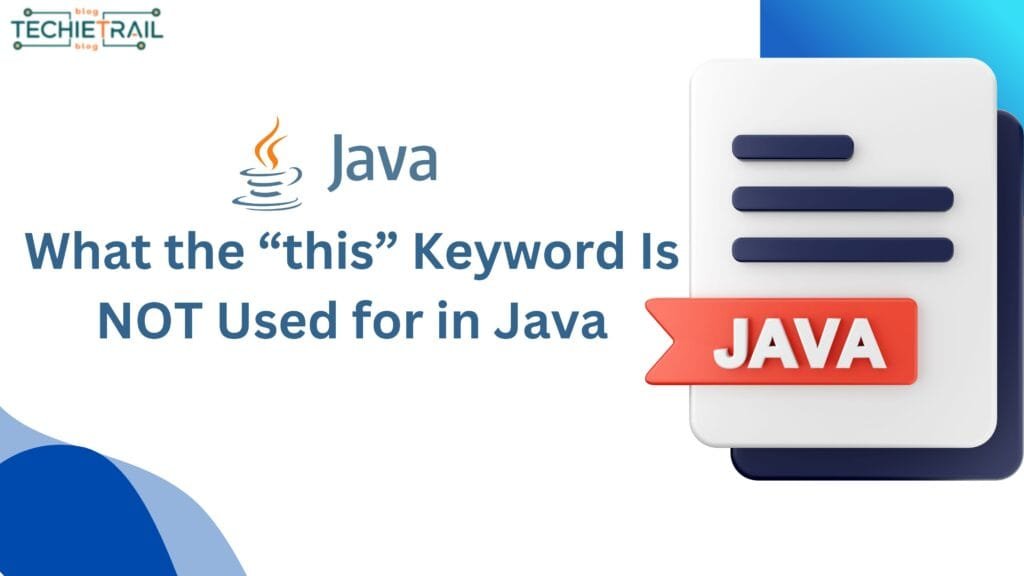You might have heard about this keyword while learning Java, and wondering what is not the use of this Keyword in Java?. Understanding how and when to use it is crucial for writing clean and effective Java code. However, most important is knowing what this is not used for. In this article, will explore what the this keyword in Java does not represent, how it contrasts with its actual functionality, and common misconceptions around it.
What Is the this Keyword in Java?
Before we learn what is not the use of this Keyword in Java, let’s quickly understand the purpose of this. The this keyword is Java refers to the current instance of the class. It helps differentiate between class-level variables and method parameters or local variables with the same name. For example:
class Example {
private String name;
public Example(String name) {
this.name = name; // `this` not referring the parameter it refers to the instance variable
}
}
In above example, this.name refers to the instance variable, while name on the right-hand side refers to the parameter passed to the constructor.
Also Read:
What Is Not the Use of this Keyword in Java?
While this is a powerful keyword, it does not serve the following purposes:
1. Static Context
The this keyword cannot be used in static methods or static blocks. This is because static members belong to the class itself, not to any specific instance.
Example:
class Example {
private String name;
public static void display() {
// System.out.println(this.name); // This will throw a compile-time error
}
}Why?
Since this points to the current instance of the class, it has no meaning in a static context where no instance exists.
2. Accessing Static Members
You cannot use this to access static variables or methods, even from a non-static context.
Example:
class Example {
private static int count;
public void increment() {
// this.count++; // Compile-time error
count++; // Correct way
}
}Why?
Static members belong to the class itself and are shared across all instances. Using this for static members could create ambiguity and is not allowed.
3. Creating Static References
The this keyword is not used to refer to static references, such as a class name. Static references are always accessed using the class name, not an instance or this.
class Example {
private static String message = "Hello";
public void showMessage() {
System.out.println(Example.message); // Use class name instead
}
}4. Referring to Parent Class Instances
While this refers to the current instance, it cannot directly refer to the instance of the parent class. For that, Java provides the super keyword.
class Parent {
protected String name = "Parent";
}
class Child extends Parent {
private String name = "Child";
public void displayNames() {
System.out.println(this.name); // Refers to Child's name
System.out.println(super.name); // Refers to Parent's name
}
}Why?
The this keyword is strictly tied to the current class instance, while super is designed to handle parent-class references.
5. Referencing Multiple Instances Simultaneously
The this keyword can only refer to one instance at a time the current one. You cannot use it to reference another instance of the same class.
class Example {
public void compare(Example other) {
// this == other // You can compare, but `this` won't refer to `other`
}
}Common Misconceptions About “this”
- It’s Global:
Thethiskeyword is not global—it is limited to the current instance.
- It Can Be Used Anywhere:
As discussed,thiscannot be used in static contexts.
- It Can Be Overridden:
The behavior ofthisis inherent and cannot be overridden or modified.
Why Understanding These Limitations Matters
Knowing what is not the use of this Keyword in Java is as important as understanding what it can. This knowledge helps avoid common pitfalls and makes debugging easier. Misusing the this keyword often leads to compile-time errors or logical bugs in your program.



